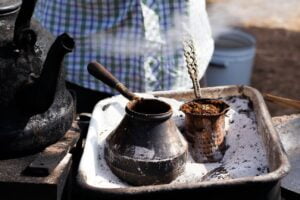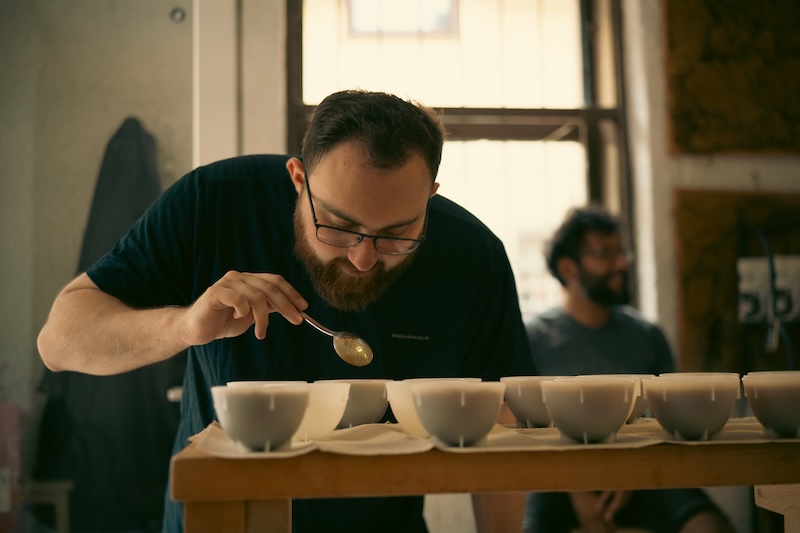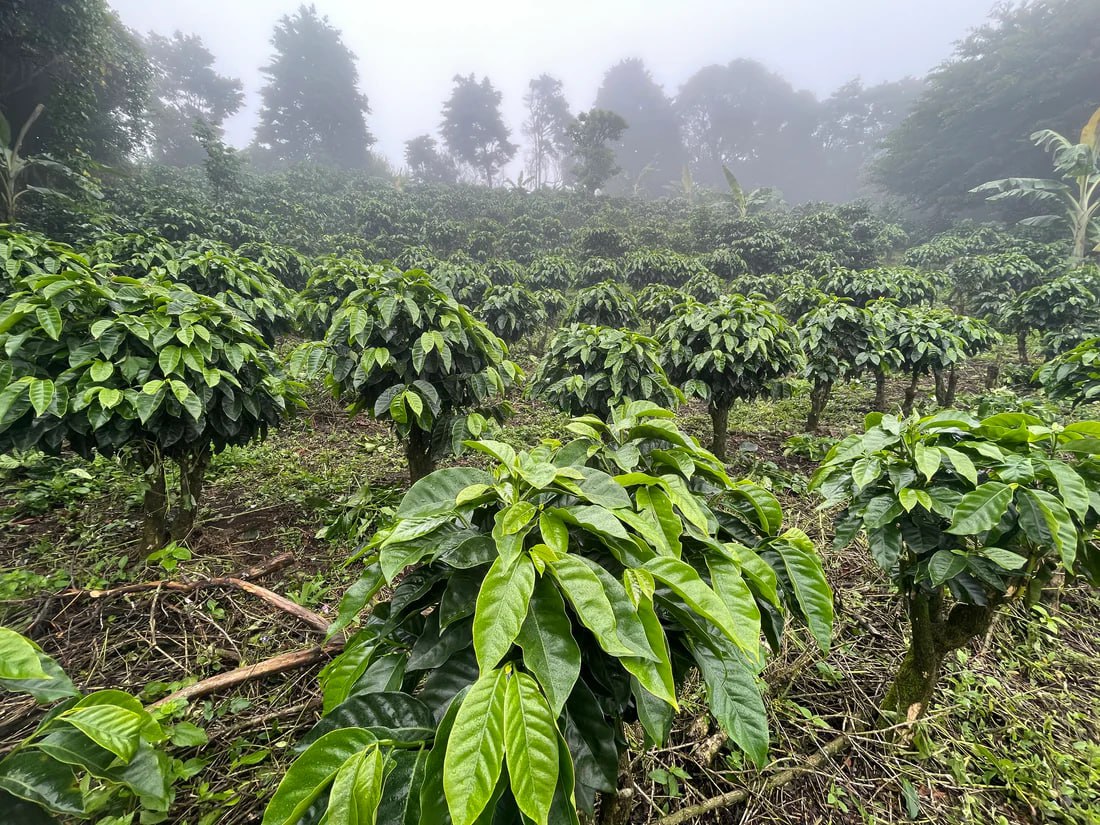ALL POSTS
ALL POSTS
Turkish Coffee: What Is It and How Do You Make It?
4 min read
Last edit: Jan 9, 2025

From a hard-hitting espresso to the humble flat white, the coffee world is full of different ways to consume our favorite brew. There is a lot of reasoning behind the way various countries choose to make their coffee – Italians favor a Moka pot over other methods, for example – but one with a particularly fascinating history is Turkish coffee. This ancient brew, finely ground and brimming with tradition, offers a unique coffee experience.
In this article, we will explore what Turkish coffee is and its fascinating history, as well as guide you through the steps of making it using a traditional coffee pot, known as an Ibrik.
What is Turkish coffee?
The drink, also known as Türk kahvesi, is a big part of Turkish culture that has been around for centuries. This distinctive coffee style hails from the Ottoman Empire and is said to have been introduced to the Sultan’s court around 1540 by the Turkish Governor of Yemen, Ozdemir Pasha. This fragrant brew quickly won the hearts of the elite, and it wasn’t long before it became an integral part of Turkish history and culture.

The coffee is often roasted to a medium level and is ground finer than traditional Italian espresso. Unlike traditional Western brew methods, it is brewed slowly until the foam rises, after which it is served black in small coffee cups. The coffee is often accompanied with a glass of water to cleanse the palate.
A brief look into history
When Pasha brought coffee to the palace, the Sultan’s staff were tasked with trying out new methods to make it. Using mortars, they finely ground the coffee beans and used the special Turkish pot, the Ibrik, to brew the coffee. This innovative approach not only delighted the palace but also paved the way for Turkish coffee to become a beloved tradition across the Ottoman Empire.

Skilled coffee artisans known as “Kahveci Usta” were employed by palaces, high-ranking officials, and wealthy citizens to craft this newly found drink. Many of these professionals eventually established their own coffee houses (the first opened in Istanbul in 1554), turning Turkish coffee into a beloved daily ritual for the masses.
In 2013, this coffee and the culture surrounding it were added to the UNESCO Representative List of the Intangible Cultural Heritage.
Turkish coffee traditions
Turkish coffee is also often used in wedding rituals. When the groom’s family visits the bride before the wedding, she is tasked with making coffee for the guests to showcase her brewing skills. Sometimes, women will add a pinch of salt to the coffee; if the groom drinks it fully without aversion, it is a sign of his manliness and dedication to the marriage.
Another tradition associated with Turkish coffee is the art of reading coffee grounds. Once the coffee is drunk, the cup is flipped upside down on a plate and the grounds are read by a fortune teller, who can interpret certain patterns and predict the drinker’s future. It is not custom to read your own cup, as it could be misinterpreted.
How to make Turkish coffee
Preparing this coffee is an art in itself. Though the methods and ingredients vary, the general approach is similar in most cases, which is laid out below:
Ingredients:
- Finely ground Turkish coffee beans
- Cold water
- Sugar (optional)
- Cardamom (optional)
Equipment:
- A traditional Turkish coffee pot (Ibrik)
- A small coffee cup (fincan) with a saucer
Instructions:
- Measure the water: For each cup, you’ll need about 60ml of cold water.
- Choose your coffee: Turkish coffee is traditionally made from very finely ground beans. You can buy pre-ground Turkish coffee or grind your own beans to an extra-fine consistency, similar to talcum powder.
- Add sugar (if desired): The coffee can be sweetened to taste. For a standard serving, add one to two teaspoons of sugar per cup. Adjust the sweetness to your preference.
- Add cardamom (if desired): Cardamom is a popular aromatic addition to this Turkish drink. A pinch of ground cardamom added to the coffee before brewing can elevate the flavor.
- Combine the ingredients: In your Ibrik, mix the water, coffee, sugar, and cardamom (if using). Stir the mixture gently to ensure even distribution.
- Heat and brew: Place the Ibrik over low heat, allowing the coffee mixture to come to a simmer slowly. Be patient; do not rush this process. As the coffee begins to heat, a foam will form on top. This frothy top is a distinctive feature of a well-brewed coffee.
- Do not stir: Resist the urge to stir once the coffee begins to heat. This allows the foam to form and creates the signature texture of Turkish coffee.
- Serve with water: This coffee is traditionally served with a glass of cold water and often accompanied by a side of Turkish delight for a delightful contrast of flavors.

As a coffee enthusiast, it’s worth delving into the world of Turkish coffee and trying out this century-old brewing method. Contrary to popular belief, it is actually becoming popular with younger generations, with more people around the world gaining an interest in the art. No matter your stance, this unique brewing approach combined with a rich history has earned a special place in the hearts of coffee lovers worldwide.
Would you like to learn more about other coffee roasters in Slovenia? Here are the guides.









